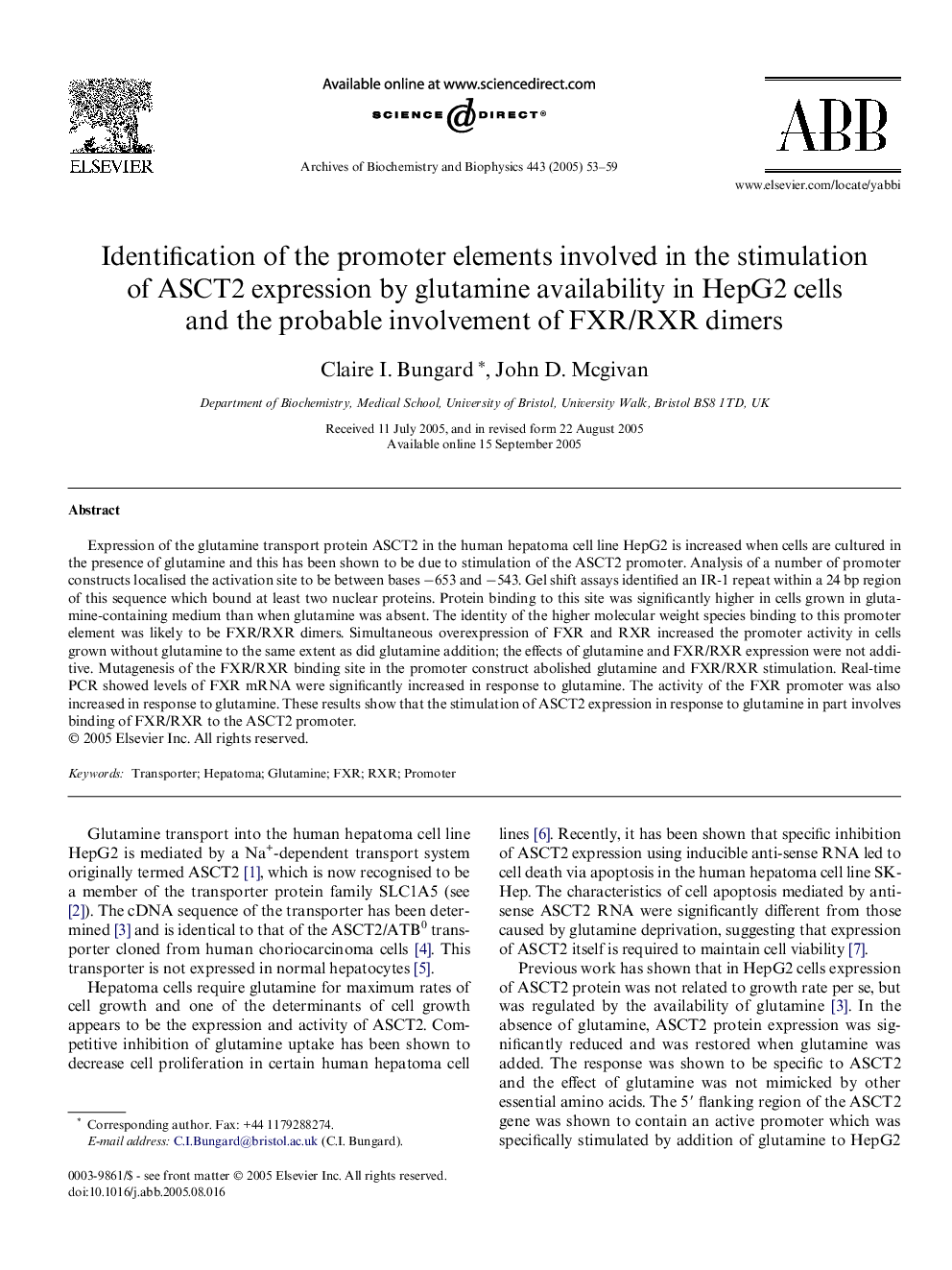| Article ID | Journal | Published Year | Pages | File Type |
|---|---|---|---|---|
| 9882086 | Archives of Biochemistry and Biophysics | 2005 | 7 Pages |
Abstract
Expression of the glutamine transport protein ASCT2 in the human hepatoma cell line HepG2 is increased when cells are cultured in the presence of glutamine and this has been shown to be due to stimulation of the ASCT2 promoter. Analysis of a number of promoter constructs localised the activation site to be between bases â653 and â543. Gel shift assays identified an IR-1 repeat within a 24Â bp region of this sequence which bound at least two nuclear proteins. Protein binding to this site was significantly higher in cells grown in glutamine-containing medium than when glutamine was absent. The identity of the higher molecular weight species binding to this promoter element was likely to be FXR/RXR dimers. Simultaneous overexpression of FXR and RXR increased the promoter activity in cells grown without glutamine to the same extent as did glutamine addition; the effects of glutamine and FXR/RXR expression were not additive. Mutagenesis of the FXR/RXR binding site in the promoter construct abolished glutamine and FXR/RXR stimulation. Real-time PCR showed levels of FXR mRNA were significantly increased in response to glutamine. The activity of the FXR promoter was also increased in response to glutamine. These results show that the stimulation of ASCT2 expression in response to glutamine in part involves binding of FXR/RXR to the ASCT2 promoter.
Related Topics
Life Sciences
Biochemistry, Genetics and Molecular Biology
Biochemistry
Authors
Claire I. Bungard, John D. Mcgivan,
